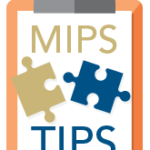 Happy New Year! You may have noticed my short absence from the blog—but I had good reason.
Happy New Year! You may have noticed my short absence from the blog—but I had good reason.
As of Dec 31, 2017, Acumen EHR v8.0 achieved Office of the National Coordinator for Health Information Technology (ONC-Health IT) 2015 edition certification!
With the addition of our third-party vendors, Rcopia v3 (DrFirst) and SES Direct (secure email), Acumen EHR customers will now have a 2015 Certified Electronic Health Record Technology (CEHRT) for the 2018 performance period.
Don’t worry, I won’t use this blog to talk about our achievement; instead, I’ll go through how this upgrade will impact you under the Merit-incentive Based Payment Systems (also known as MIPS).
What’s a 2015 CEHRT?
A CEHRT (Certified EHR Technology) is defined by CMS specifically for their incentive payment programs such as Meaningful Use and MACRA. The term is rather flexible, but overall it requires the following:
- Must be certified in all criteria associated with 2015 Edition Base EHR definition and criteria directly associated with specific CMS measures which are being reported:
- CPOE-Medication
- CPOE-Labs
- CPOE-Diagnostic Imaging
- Demographics
- Problem List
- Medication List
- Medication Allergy List
- Clinical Decision Support
- Smoking Status
- Implantable Device List
- Transition of Care
- Must be certified in criteria directly associated with specific CMS measures which are being reported:
- Family Health History
- CQM—Import and Calculate
- CQM—Report
- Patient Health Information Capture
- Automated Numerator / Measure Reporting
- Must be certified in criteria directly associated with specific CMS measures which are being reported:
- Patient-Specific Education Resources
- Transmission to PHA—Antimicrobial Use and Resistance Reporting*
- Electronic Prescribing
- Transmission to PHA—Syndromic Surveillance*
- Transmission to Immunization Registries
- Patient Health Information Capture
- Secure Messaging
- Transmission to PHA—Electronic Case Reporting*
- Transmission to PHA—Health Care Surveys*
- View, Download, and Transmit to 3rd Party
- Transmission of Cancer Registries*
- Clinical Information Reconciliation and Incorporation
- Drug-Drug, Drug-Allergy Interaction Checks
- Drug-Formulary and Preferred Drug List Checks
- Trusted Connection
- Safety Enhanced Design
- Quality Management System
- Family Health History
- Auditing Actions on Health Information
- Clinical Quality Measures—Report
- Auditable Events and Tamper-Resistance
- Integrity
- Accessibility-Centered Design
- Consolidated CDA Creation Performance
- Authentication, Access Control, Authorization
- Audit Report(s)
- Amendments
- Automatic Access Time-Out
- Emergency Access
- End-User Device Encryption
- Application Access—Patient Selection
- Application Access—Data Category Request
- Application Access—All Data Request
- Direct Project
*Optional and not offered in Acumen EHR v8.0
Clinicians with a 2015-edition CEHRT will see an upgrade in the areas of interoperability, facilitating data access, patient engagement, and patient safety, along with better supporting features for programs such as MIPS and Meaningful Use.
New ACI Measures in 2018
Outside of the features I listed above, having a 2015 certified EHR will also add new measures to the advancing care information (ACI) portion of MIPS.
New Measure #1: Receive and Incorporate
The first new measure also doubles as a new base measure in 2018. That means clinicians will be required to report on this measure along with the four other base measures in 2018.
CMS defines the measure as the following:
“For at least one transition of care or referral received or patient encounter in which the MIPS eligible clinician has never before encountered the patient, the MIPS eligible clinician receives or retrieves and incorporates into the patient’s record an electronic summary of care document.”
In other words, for every encounter in which a patient is new or is transitioning back into your care, you will need to get their electronic summary of care document from another entity and store it in the patient’s chart.
If that sounds scary, remember, you only need to do this one time in order to meet the base measure requirements. If you don’t score well in the performance department, you should focus on other measures where you can boost your performance score. Also, don’t forget all the bonus points you can collect. (More on this later!)
New Measure #2: Patient-generated Health Data
This measure was created to encourage clinicians to incorporate health data such as social service data, advance directives, medical device data, home health monitoring data, fitness monitor data, etc.
CMS defines the measure as the following:
“Patient-generated health data or data from a non-clinical setting is incorporated into the certified EHR technology for at least one unique patient seen by the MIPS eligible clinician during the performance period.”
This measure is not a base measure—and is completely optional for a clinician to select.
In addition to the new measures, some existing measures have also been slightly modified.
Click here to download a zip file containing the specifications for each ACI measure.
Bonus Points
In the 2018 MACRA final rule, CMS relieved the pressure to make the switch to a 2015 CEHRT in 2018—making it perfectly fine to use a 2014-edition CEHRT this year. However, there are some disadvantages to not making the leap.
For one, you will miss out on new features that will assist with interoperability, facilitating data exchange. Two, you will be in more of a crunch when you are required to use a 2015 CEHRT for the entire year in 2019. And lastly, you will leave some bonus points on the table!
For those using a 2015-edition CEHRT to report ACI measures this year, you will receive a one-time bonus of 10%! This should allow you a little relief if you were sweating the new and modified measures that a 2015-edition CEHRT may bring.
This isn’t the only way to earn bonus points, but I will save that topic for another blog post!
90-day Reporting Period in 2018
Luckily for you, CMS has once again extended a 90-day reporting period (for the ACI category only) to help clinicians and staff prepare for all of the 2015-edition CEHRT upgrades. This will hopefully allow you and your staff some time to brush up on the new EHR features.
There is still so much to cover in the world of 2018 MIPS changes, but—have no fear—we will try to help you through it! For our Acumen EHR customers, stay tuned for an email invitation for 2018 MIPS live training.
How are you feeling about the 2018 reporting period? What are you doing to prepare? We would love to hear below!
 Diana Strubler, Policy and Standards Senior Manager, joined Acumen in 2010 as an EHR trainer then quickly moved into the role of certification and health IT standards subject matter expert. She has successfully led Acumen through three certifications while also guiding our company and customers through the world of Meaningful Use, ICD-10 and PQRS.
Diana Strubler, Policy and Standards Senior Manager, joined Acumen in 2010 as an EHR trainer then quickly moved into the role of certification and health IT standards subject matter expert. She has successfully led Acumen through three certifications while also guiding our company and customers through the world of Meaningful Use, ICD-10 and PQRS.
Image from www.canstockphoto.com




Kim Donoho says
Hi,
I have a question in regards to upgrading our EHR to 2015. We are working on upgrading to 2015 this year. My question is do you know what the penalties are if you do not upgrade to 2015 EHR. Will you get a % deducted from Medicare payments if you are still using 2014 and it is required to be on 2015? Will there be fines?? Thanks
BJ Fife says
Hi Kim!
Thankfully 2018 is a year where you can still continue to use your 2014-edition EHR. The downside of this would be missing out on bonus points. Clinicians who use a 2015-edition EHR, and report Advancing Care Information measures, will get a bonus of 10%.
So far it looks like you have until Jan 1, 2019 to make the upgrade.
I hope that helps!